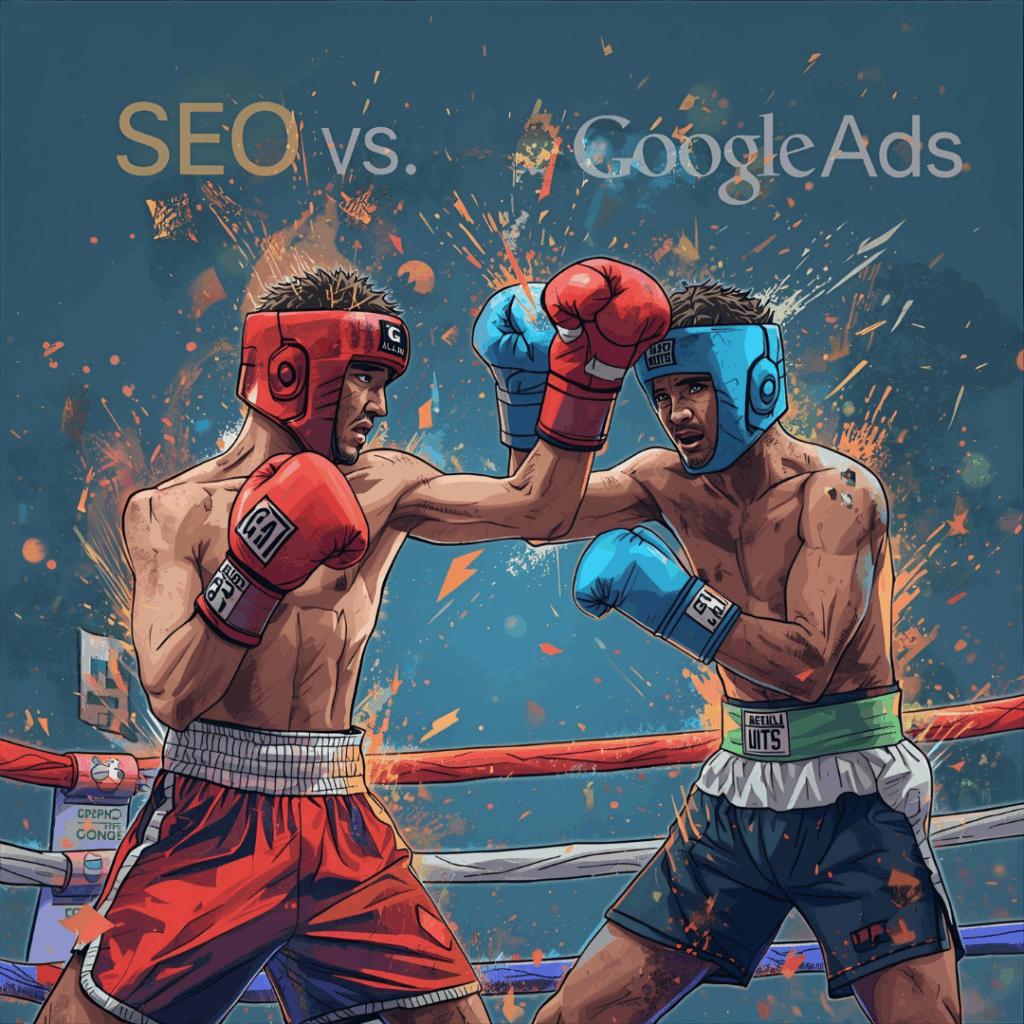What CMS Is Best For Your Business? Selecting From The Most Popular Options
When researching how to develop a website, the term “CMS” appears everywhere. However, most people we talk to don’t even know what a CMS is, much less which one to choose.
Do not despair my friend, we’ll help you along. This article will explain exactly what a CMS is, what different types of CMS there are, and which ones you might want to consider.

What is a CMS?
A CMS – which is an abbreviation for Content Management System – is an application used for the creation and alteration of digital content. In order to simplify this, a distinction between two different content management systems is made:
- Web Content Management Systems (WCM) and,
- Enterprise Content Management Systems (ECM)
Web Content Management Systems are used to manage the creation, alteration and publishing of content on the web.
On the other hand, Enterprise Content Management Systems manage the storing, preserving and delivery of content and documents that contribute to organisational processes.
The primary benefit of a CMS is the simplification of content management for users without an IT background so that the creation of web content or the management of digital documentation can be done without the help of an IT staff member, which saves time and increases productivity.
Both WCMs and ECMs come with different benefits for your organisation. Where WCM will aid in the improvement of your website’s performance, the implementation of ECM helps in maintaining agile workflows within your organisation.
These examples form only a small sample of the benefits that these systems can bring to your organisation. So how would you go about choosing a CMS that is suitable for your company?
There is a multitude of different options when it comes to content management systems, whether it’s an open source CMS, a platform as a service or a website builder. It’s hard to make a decision without having properly examined the different offers available.
So, what are the best CMS options?
Let’s start with Web Content Management Systems
A WCM allows users of a non-IT background to manage the content of a website in an approachable manner. By separating content and layout, the alteration, maintenance and updating of the website is simplified – making it easier to execute your website ideas.
Within the realms of Web Content Management Systems, we can identify different types, including:
- Open Source WCM
- eCommerce WCM
- DIY WCM

Open Source WCM
The thing with Open Source systems is that even though they are managed by one coordinating body, the system is not in the direct possession of a person or organisation.
This means that any person with the right skills – and enough time on their hands – is able to alter the system. The main benefit for users is that these systems or their software are usually free.
And who doesn’t like free stuff?
WordPress
WordPress is most probably the easiest WCM out there at the moment, which is also its biggest advantage. As our very own WordPress website design, Matt Neal, so eloquently stated: WordPress makes getting a new site up and running possible in hours, not days.
WordPress does not require knowledge of programming languages or any other excessive digital skills for that matter. However, if you do have these skills, the WordPress filter system allows you to make custom alterations to pre-set themes and features.
Although this might not be necessary, as pretty much any function or feature you’d like to see on your website will have a corresponding WordPress plugin, creating endless options for the customisation of your website.
These plugins range from helping with SEO to social media strategies, and more. Just keep in mind that WordPress is not made to handle high-performance websites. This means that if you use thousands of plugins to create your website, it will take ages to load.
And no one wants to wait 3 hours for a website to load, now do they?
In the end, it’s safe to say that WordPress is great if you’re looking for an easy website with little fuss. If you’re looking for a high-performing website created through an open source WCM, we recommend you take a look at Drupal vs WordPress instead.
Drupal
Drupal requires a tad more technical skill than WordPress but is extremely useful when you want your website to incorporate more features.
With the upgrade from Drupal 7 to Drupal 8, the use of modules (Drupal’s plugins) was simplified and ameliorated, making it easier to build state-of-the-art websites.
Because Drupal is open source and popular, it has a large online user community – not unlike WordPress’ community. However, the dynamism and potency which makes Drupal so strong are often perceived as complex, as becoming familiar with the WCM can be a bit rough.
To work with Drupal, one needs at least a basic understanding of three programming languages: HTML, CSS and PHP. Still, when it comes to Drupal, it’s an easy WCM to use – but only once you know how to do so.
Joomla!
Another option, although one which is not often preferred, is to use Joomla! as your WCM. When comparing different kinds of WCM, Joomla! can be described as the medium between WordPress and Drupal when it comes to ease of use.
When using Joomla!, some basic skills are recommended, but no knowledge of programming languages is needed. Still, Joomla! is not as preferred as WordPress or Drupal, mainly because its functions and features do not seem to be as effective.
In the end, Joomla! is alright if you’re not familiar with any sort of web development and want an easy way to set up your own website.
So which open source CMS should you choose?
When we compare WordPress, Drupal and Joomla!, it becomes clear that there’s not one definitive pick. There are distinct differences between each, making them better suitable for different situations.
Speak to our Digital8 web developers today for assistance in finding the best solution for your business.
Now, let’s go through a comparison of three popular eCommerce WCM systems.

eCommerce WCM
If your website’s main purpose is aimed at online sales, an eCommerce WCM is your best bet. According to Shopify, an eCommerce WCM that we’ll explore below, the global eCommerce market is expected to total $5.55 trillion in 2022.
Therefore, the set-up and maintenance of a decent eCommerce website with a contemporary eCommerce website design are imperative to the creation of a lasting impression through your online presence.
Magento
Magento offers both an open source and “platform as a service” option for their eCommerce WCM systems: Magento OS (Open Source) and Magento Commerce – previously named community and enterprise.
Magento Commerce will provide you with pre-set designs and is made especially for users that don’t consider themselves to be very tech-savvy. However, Magento Commerce lacks quite a few customisation options, making it the less favourable option in some cases.
On the other hand, we have Magento OS, a free and far more customisable WCM. The latter does, however, require a bit more digital skill. The main benefit of Magento OS is the high level of scalability, as it is fit for both small and larger businesses.
This version is preferable if you want your eCommerce website to have a personalised touch, rather than sticking to basic web design. Magento OS is ideal if you’re outsourcing the creation and maintenance of your website or your company employs its own web developers.
Shopify
Shopify is a great choice for startups or small businesses requiring eCommerce functionality. Shopify is a “platform as a service”, meaning it’s not open source. But no worries, this doesn’t mean that it will limit your customisation options.
Shopify’s main assets include its ease of use, easy integrations with other channels and shopping cart features. Shopify allows you to sell – both physical and digital – products through Facebook or Pinterest, as well.
It’s able to do so because the tool acts like a product database, rather than just an eCommerce sales platform.
In conclusion, Shopify is clean and powerful and it does what you want it to do – for once it’s actually that simple. However, beware that once your range of stock grows and you need more customisation, Shopify may become a less cost-effective option.
WooCommerce
WooCommerce is a WordPress plugin for developing eCommerce websites on a WordPress platform. It’s the way in which the world’s largest open source WCM responds to the growth of online retail.
WooCommerce comes with all the benefits of WordPress, making it an extremely favourable tool when it comes to the creation of an eCommerce website. However, it also comes with the downsides of WordPress, such as the limitations to customisation.
Even though WooCommerce is solely a plugin and not a full WCM specifically designed for eCommerce purposes, it incorporates all necessary functions and features for a properly functioning eCommerce website.
All in all, WooCommerce is better than most other eCommerce WCM systems and should most certainly not be underestimated.
Once again, which WCM should you pick?
Magento, Shopify and WooCommerce all have their own strengths, all of which are best suited to different applications. Talk to the Digital8 team to determine which eCommerce platform suits your business in terms of getting things up and running as well as future expansion.

Website Builders
The last type of WCM that is worth distinguishing is the so-called website builders. These WCM providers are set up in such a way that all you’ll need to do is click on what you think looks pretty.
Their drag-and-drop website builders and simplified interfaces make it easy to build your own website.
The main difference between these WCM systems and the open source WCM systems mentioned earlier on, is that these WCM systems are already hosted and mainly function as a platform as a service.
However, do not forget that these website builders don’t even compare to a website that is professionally built using a WCM like Drupal or WordPress – so you might not want to build it yourself.
Three of the best website builders are Wix, Weebly and Jimdo. The simple fact is, they are all really easy to use, they all provide you with pre-set designs and all claim to have the best digital marketing strategy and SEO tools – the latter being a bit of a stretch, to be honest.
Wix and Weebly are probably the most user-friendly as they use a drag-and-drop interface to build websites, whereas Jimdo doesn’t. However, this does not necessarily mean that Jimdo is a particularly hard website builder to use.
Also, when building a website using Wix or Jimdo, you’re limited to the designs that the builder offers. Weebly allows for some third-party integration when it comes to templates, but it’s far from ideal.
When it comes to marketing and SEO tools, all three are pretty decent – but to classify them as the best… that’s just ridiculous.
For example, Jimdo has some issues with SEO optimisation per single page, Wix automatically adds a question mark and code to your URL and Weebly doesn’t allow for a pre-set header1 option to be added to blogs. All these examples interfere with good SEO practices.
All in all, these platform-based WCM systems are alright if you’re a small business that’s looking for a very basic website.
Just remember to purchase the full versions though, as the free versions will add the website builder’s name to your domain – and let’s face it, “digital8.jimdo. com” would just be confusing.
What we’re trying to say is that we don’t recommend using these website builder platforms. They might be a good short-term solution, but if you want to scale your business, there are far more cost-effective approaches – even if these builders seem cheaper on the surface.

Enterprise Content Management Systems
Ok, so here is where it gets particularly tricky. We’ve looked at what WCM systems are and what different offers there are. Now, Enterprise Content Management (ECM) is not necessarily the same as an enterprise scalable WCM, although it can act as one.
Confused yet? Stick with us.
As previously explained, an ECM manages the storing, preserving and delivery of content and documents that contribute to organisational processes.
In simple terms, this means that all content that’s considered important to the functioning of your business is stored using this system. This content can range from administrative documents to promotional videos, from email threads to employee IDs.
An ECM is able to align with existing databases, alter them or even create new ones. In the end, an Enterprise Content Management system is an umbrella concept.
It incorporates and combines web content management, document management, records management and workflow management.
In this world of continuous change and digital innovation, the storage and management of all your digital content are imperative to the functioning of your business.
Small businesses may not experience significant issues related to their content management, but growing or large businesses will eventually realise that their content is getting lost or is not where it’s supposed to be.
By using an ECM, employees are able to access all relevant content, their previous versions and the corresponding metadata. This, in addition to being able to create, edit and upload content to relevant platforms and channels is where the ECM is able to function as a WCM.
Not every version will have the design options that come with WCM-specific systems, but they will most certainly let you control the content that you are uploading or have uploaded onto your website.
Which one fits your needs?
The answer to this question is extremely simple and you’ll probably have figured it out already, as it relies on your initial interest. Did you want to design a website? Or did you want to change your company’s IT structure and implement a completely new system ?
It’s probably the first, right? This means a WCM system is going to help you reach your goal.
If you’re still uncertain about which one you would like, or simply want to get some more detailed information, feel free to contact us today to explore your options in more depth!
Are you ready to grow your business?
We write about a variety of topics in the digital industry.



